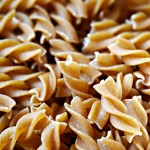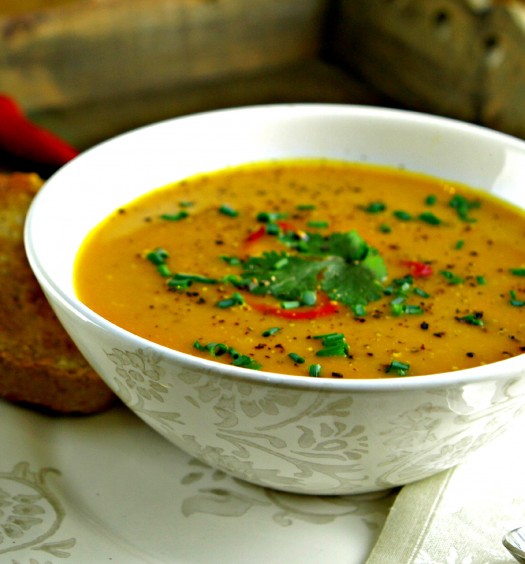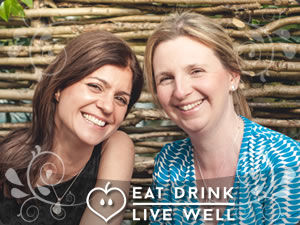So September begins: we say farewell to carefree warm summer days, of picnics in the garden and far too-frequent ice creams. For those of us returning children to school, and those of us who make lunchboxes this is a dramatic change in routine. Over summer, I am relaxed about how stocked-up we are with food at home; if food is low we’ll eat out, graze through the day or pop to the shops and have a late lunch. This approach, needless to say, doesn’t work alongside the school day.
Suddenly what to put in a school lunchbox becomes an extra, unnecessary stress at the start of the day – but it’s one that can be easily alleviated with a little planning.
Figures indicate that a shocking mere 1% of school lunchboxes are healthy, and so the School Food Plan http://www.schoolfoodplan.com is a government backed proposal aiming to boost the quality of school dinners, and their uptake to at least 70%. This is a wonderful proposal – if our school offered truly healthy school lunches I’d consider them – but until then (and perhaps even after then) I’m a resolute lunchbox fan.
I truly love the lunchbox for a number of reasons:
- It’s simple – what my daughter takes to school, we’ll eat for lunch at home. We can then eat the same in the evening as well.
- Food I know she enjoys goes into the box
- I know she’s getting a nutritious lunch; I buy mostly organic, reducing the risk of growth hormones and pesticide residues as by-products
- I know how much she eats
Rather than discourage people from lunchboxes and focusing entirely on school dinners, I want to see lunchboxes get healthier, filled with interesting, appetizing and varied food each day (I’ve already vented on this in a previous blog so I won’t repeat myself here). There’s no need for lunch boxes to be unhealthy!
What should we be putting in our lunchboxes?
Government lunchbox guidelines suggest starchy carbs, protein, fruits and vegetables, dairy foods and a drink. Fizzy drinks, confectionary, and foods high in sugar, salt and fat should be left out. It seems easy on the face of it, but marrying this with what the kids will actually eat is often difficult. Add to this organizational issues of making sure the proposed food is actually in the house, and trying to put it together while attempting to dress children and exit the house in the morning and we can see:
a) why school dinners are popular
b) why many lunchboxes contain a random assortment of quickly grabbed processed food
So here’s our lunchbox made easy guide – 6 easy lunchbox tips:
1. Starchy foods: carbs give kids energy but they should be healthy carbs – giving them fibre and  nutrients as well. Processed carbs such as white bread aren’t good enough – they lack nutrients and help to imbalance blood sugar levels. Properly balanced blood sugar levels support your children’s learning, memory and concentration and lead to fewer hyper or lethargic children for teachers to deal with after lunch. Make sure sandwiches are always wholegrain, but experiment with other carbs: wholemeal or gluten-free wraps and pittas, oatcakes, soda or rye bread, beans, pulses and brown rice or pasta salads. Quinoa and buckwheat are good gluten-free options for salads – but may be better for older children who don’t scatter it all over the floor. Remember that vegetables (e.g. sweet potato, corn, beetroot) all count as carbs – it doesn’t need to be grain based. Adding healthy fats to the carbs is also really important – it helps energy levels and also absorption of nutrients (some olive oil or avocado for instance)
nutrients as well. Processed carbs such as white bread aren’t good enough – they lack nutrients and help to imbalance blood sugar levels. Properly balanced blood sugar levels support your children’s learning, memory and concentration and lead to fewer hyper or lethargic children for teachers to deal with after lunch. Make sure sandwiches are always wholegrain, but experiment with other carbs: wholemeal or gluten-free wraps and pittas, oatcakes, soda or rye bread, beans, pulses and brown rice or pasta salads. Quinoa and buckwheat are good gluten-free options for salads – but may be better for older children who don’t scatter it all over the floor. Remember that vegetables (e.g. sweet potato, corn, beetroot) all count as carbs – it doesn’t need to be grain based. Adding healthy fats to the carbs is also really important – it helps energy levels and also absorption of nutrients (some olive oil or avocado for instance)
2. Protein: there should always be a source of protein in the lunchbox. Without protein, blood sugar levels will soar if the kids eat carbs by themselves – and they won’t feel as alert for the afternoon. A white bread jam or marmite sandwich doesn’t tick our carb or protein box!
Protein needs to be good quality to support those blood sugar levels: eggs, chicken, tofu, ‘proper’ cheese (not strings), yogurt, fish, pulses and beans – a big tub of edamame beans, a chicken drumstick or a tub of hummus or one of our other bean dips are easy protein options. If your school isn’t fussy on nuts then nut butter or whole nuts are excellent healthy protein and fat options – but otherwise savoury seeds to munch on, seed butters or tahini work well as spreads.
3. Fruits and Veggies: the more the better – need we say more? Salads are the ultimate lunchbox food (if your child eats them!)
4. Drinks: Stick to water – it’s free and doesn’t impact blood sugar levels unlike sugary soft drinks and juices (even low-sugar squash contains sweeteners). Coconut water is a good alternative on hot days as it hydrates thirsty children well – or infused water
5. Desserts: Easy to assemble (and quick to eat) – grapes and berries are my favourite if the rest of the lunchbox is filling. Hungry children can fill themselves up even more on a small pot of  natural greek (or coconut) yogurt with honey and fruit swirled in is also an easy option. Buying a big pot and putting a few spoonfuls in a small tub with a spoon not only saves money, but also avoids yogurt splatters as kids struggle to tear open the tiny sugar-laden plastic tubes marketed at children. If you’re mega-organised, making up pots of our healthy chocolate orange mousse chocolate flapjacks, energy balls, coconut chips or chocolate tasty bites in our experience work well!
natural greek (or coconut) yogurt with honey and fruit swirled in is also an easy option. Buying a big pot and putting a few spoonfuls in a small tub with a spoon not only saves money, but also avoids yogurt splatters as kids struggle to tear open the tiny sugar-laden plastic tubes marketed at children. If you’re mega-organised, making up pots of our healthy chocolate orange mousse chocolate flapjacks, energy balls, coconut chips or chocolate tasty bites in our experience work well!
6. Get organised: Seems obvious – but I regularly fail on this. On a good day, I get up just five minutes earlier to prepare the lunchbox before breakfast, without children present. Planning lunchboxes in advance is vital; the spontaneous lunchbox invariably ends up with a weird assortment of food so work out a plan for the week. Invest in some small gel freezer packs to keep the contents cold, and also in some funky pots and tiffin boxes, which are great for non-sandwich snacky lunches, and which the kids enjoy using. It’s also important to make it quick to eat – a brown-rice salad for a slow-eater will invariably be left in favour of getting into the playground as quickly as possible.
Please share your healthy lunchbox ideas with us!
We hope you enjoy this blog post, let us know your thoughts in the comments below or on social media – we’re on Twitter, Facebook, Instagram and Pinterest. And don’t forget to sign up to our newsletter to receive a monthly update of our recipes, nutrition tips and expert advice.





